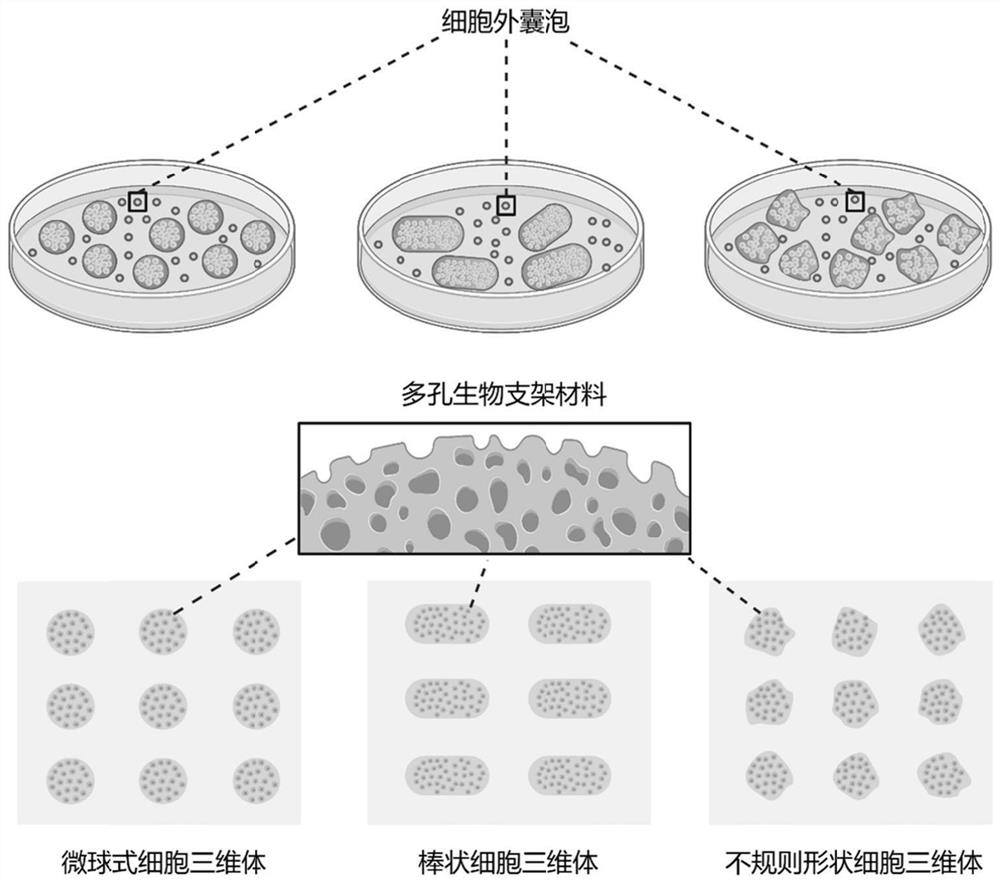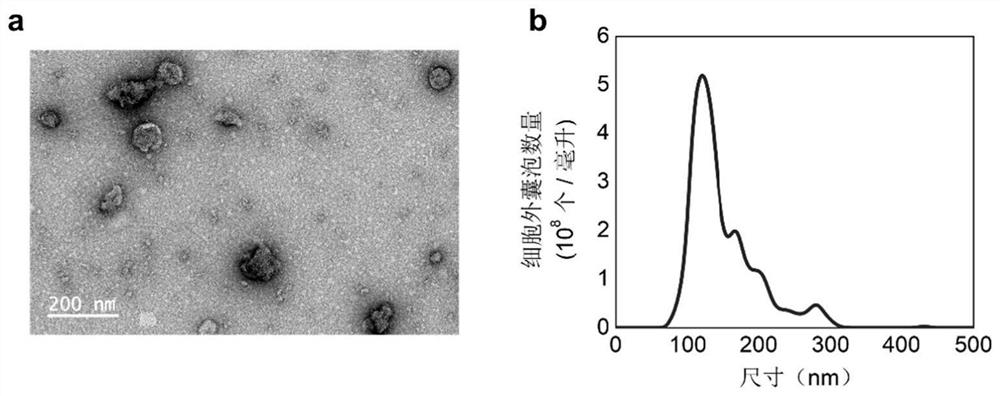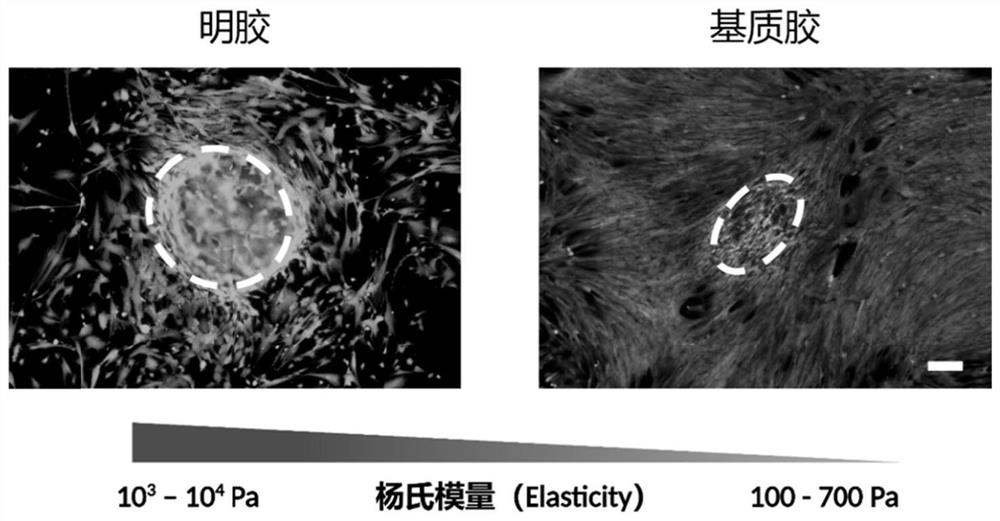Method for efficiently producing extracellular vesicles
A technology of cells and vesicles, applied in the field of cells, can solve the problems of large heterogeneity between batches, affecting cell proliferation, complexity, etc., and achieve the effects of improving efficiency, increasing production, and high uniformity
- Summary
- Abstract
- Description
- Claims
- Application Information
AI Technical Summary
Problems solved by technology
Method used
Image
Examples
Embodiment 1
[0040] This embodiment provides a method for producing extracellular vesicles, the method comprising the following steps:
[0041] (1) Wash the umbilical cord with normal saline, cut it into pieces, put it in a culture bottle and culture it for one week, change the medium, pass passage, digest with trypsin, collect the precipitate, mix it with normal saline, and control the cell density to 2×10 7 cells / mL to obtain a solution of umbilical cord mesenchymal stem cells (UC-MSCs). Take 0.3mL of umbilical cord mesenchymal stem cell solution and 0.3mL of Matrigel matrigel, mix them at 4°C, and add them into a 1ml syringe to form a cell-matrigel suspension. Take 6mL of fluorine oil (HFE-7000) and add it to a 10ml syringe at room temperature, which is the oil phase. Mixed, Matrigel forms several three-dimensional bodies coated with stem cells under the division of fluorine oil. Adjust the propulsion speed of the 1ml syringe and the 10ml syringe (that is, change the flow rate ratio o...
Embodiment 2
[0047] This example provides a method for producing extracellular vesicles, the difference from Example 1 is that gelatin is used instead of Matrigel.
[0048] image 3 It is a photo of the biocompatible three-dimensional body in the production process of embodiment 1 and embodiment 2. As can be seen from the figure, compared with the use of traditional hard gelatin in embodiment 2, embodiment 1 uses matrigel to prepare The lower Young's modulus of the three-dimensional body provides better conditions for cell growth, and the rate of cell expansion is faster in the space shown by the circled three-dimensional body.
[0049] Extracellular vesicle secretion assay
Embodiment 3
[0060] This example provides a method for producing extracellular vesicles, which is different from Example 1 in that fibroblasts are used for production. This method can achieve high secretion efficiency similar to Example 1.
PUM
| Property | Measurement | Unit |
|---|---|---|
| diameter | aaaaa | aaaaa |
| diameter | aaaaa | aaaaa |
| diameter | aaaaa | aaaaa |
Abstract
Description
Claims
Application Information
 Login to View More
Login to View More - R&D
- Intellectual Property
- Life Sciences
- Materials
- Tech Scout
- Unparalleled Data Quality
- Higher Quality Content
- 60% Fewer Hallucinations
Browse by: Latest US Patents, China's latest patents, Technical Efficacy Thesaurus, Application Domain, Technology Topic, Popular Technical Reports.
© 2025 PatSnap. All rights reserved.Legal|Privacy policy|Modern Slavery Act Transparency Statement|Sitemap|About US| Contact US: help@patsnap.com



